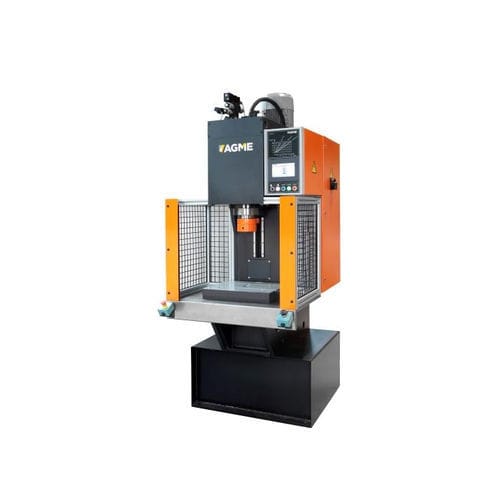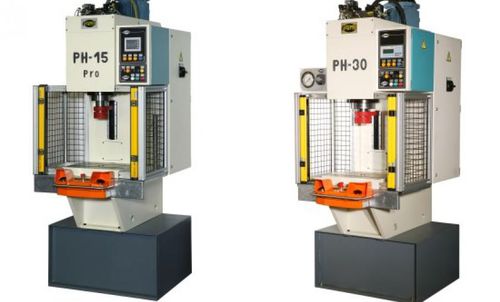AGME Automated Assembly Solutions is also a manufacturer of a versatile range of standard hydraulic presses (PH-15 Pro, PH-30 Pro and PH-60 Pro) which can meet most production needs in processes such as: assembly, hefting, riveting, punching, folding and cutting.
AGME hydraulic presses incorporate important new features:
Low-maintenance hydraulic cylinder.
Electronic movement sensor
Viewing window for cylinder course adjustment
Cycle counter and operator alarms
S7-200 programmable automaton, etc.
Furthermore, the Pro version hydraulic presses offer pressure and course advanced control functions that require no manual adjustments.
Optionally, you can add the following accessories:
Pedal or joystick control
Cycle start by single or double over stepping of the photo electric barrier
Digital gauge
Electrical control of oil level
Process control
Automation with slides, load cells, dividing plates, etc.




